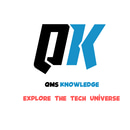Understanding AWS D1.2: The Structural Welding Code for Aluminum
WELDING
9/14/20243 min read


Introduction to AWS D1.2
AWS D1.2 - Structural Welding Code – Aluminum is a standard developed by the American Welding Society (AWS) that provides guidelines for the welding of aluminum structures.
1.Scope and Application
AWS D1.2 applies to the welding of aluminum structures. It covers welded connections in structural aluminum components used in industries like construction, transportation, aerospace, and marine applications. The code is applicable to new constructions, repairs, and modifications.
2. Material Specifications
The standard focuses on aluminum alloys, specifically the 1XXX, 3XXX, 5XXX, 6XXX, and 7XXX series. Each alloy group has different properties affecting their weldability, such as strength, ductility, and corrosion resistance. The code provides guidance on:
Selection of appropriate filler metals
Pre-welding preparation, such as cleaning and oxidation removal to ensure strong welds
Post-weld treatments, if necessary, for structural integrity
3. Welding Processes
The code permits a variety of welding processes suited for aluminum:
Gas Metal Arc Welding (GMAW): Widely used for aluminum due to its efficiency.
Gas Tungsten Arc Welding (GTAW): Preferred for high-quality welds with detailed precision, often used in aerospace.
Other processes: Including Shielded Metal Arc Welding (SMAW) and Plasma Arc Welding (PAW), with specific limitations and guidelines for each process.
4. Design and Fabrication Guidelines
The code provides clear criteria for designing and fabricating welded aluminum structures:
Joint Design: Details on the types of joints (e.g., butt, fillet) and their specific application for aluminum.
Pre-Weld Preparation: Requirements for cleaning the aluminum surface, as aluminum oxide on the surface must be removed before welding.
Welding Procedure Specification (WPS): Mandatory documentation that outlines the welding procedure variables (e.g., voltage, current, welding speed) to ensure consistency and quality in welds.
5. Prequalification of Welding Procedures
Some welding procedures can be prequalified if they meet specific criteria provided by the code, which saves time and effort in testing and documentation. These criteria are based on past performance and engineering judgment. Prequalification applies only to procedures that use specific combinations of base metals, filler metals, and processes.
6. Qualification of Welders and Procedures
To ensure weld quality, both welders and welding procedures must be qualified:
Welder Qualification: Individuals performing the welding must demonstrate their skills by passing tests under the supervision of a qualified inspector.
Procedure Qualification: The specific welding procedures must be tested and documented to prove they meet the required standards.
7. Inspection and Testing
Inspection is critical in aluminum welding due to aluminum's sensitivity to defects like porosity and cracking. The code specifies inspection methods and criteria:
Visual Inspection: All welds must be inspected visually for surface defects such as cracks, undercuts, or incomplete fusion.
Non-Destructive Testing (NDT): Additional methods like ultrasonic testing (UT), radiographic testing (RT), and liquid penetrant testing (PT) are recommended for more critical applications to detect internal defects.
Acceptance Criteria: Defines limits for weld discontinuities (e.g., porosity, cracks) that can be tolerated while maintaining structural integrity.
8. Quality Control and Documentation
The code outlines requirements for the establishment of quality control programs. It includes provisions for:
Documentation: Maintaining records of welder qualifications, welding procedures, inspection reports, and corrective actions taken when defects are found.
Quality Audits: Periodic audits to ensure compliance with the code and project specifications.
9. Structural Integrity Considerations
Since aluminum behaves differently than steel, the AWS D1.2 code takes into account the specific properties of aluminum:
Thermal Expansion: Aluminum expands more than steel during welding, requiring special consideration to avoid distortion.
Corrosion Resistance: Attention to the type of alloy and post-weld treatments to prevent corrosion.
10. Safety
The code includes guidelines to ensure safety during aluminum welding, such as precautions to avoid overheating, burning through the material, and managing weld fumes properly.
11. Repairs and Modifications
The AWS D1.2 code provides provisions for repairs and modifications of aluminum structures. It details the steps required to prepare the material, procedures to be followed, and inspections necessary to ensure the repair restores the structural integrity of the component.
